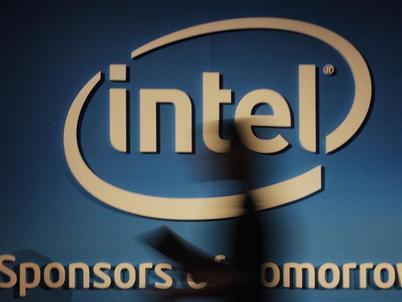Intel plans to do away with passwords "by the wave of the hand"
 Passwords for online banking, social networks and email can be replaced by hand movements if the prototype of technology developed by Intel is implemented on tablets and laptops.
Passwords for online banking, social networks and email can be replaced by hand movements if the prototype of technology developed by Intel is implemented on tablets and laptops.In an effort to circumvent the need to remember passwords for a growing number of online services, Intel researchers assembled a tablet with new software and a biometric sensor that recognizes a unique pattern of veins in the user's palm.
“The problem with passwords is that we use too many of them, and the requirements for them are complex and different for different websites,” said Shridhar Iyengar, director of security research at Intel Labs, last Thursday, at the annual Developer Forum Intel in San Francisco. "This problem has solutions, and biometrics is one of them."
He demonstrated Iyengar technology without touching the tablet, but rather waving his hand rather briskly at it. He explained that after the tablet recognizes the user, he can safely confirm his identity to banks, social networks and other services where the owner has accounts.
According to Iyengar, when laptops, tablets and smartphones can be responsible for identifying users, this will bypass the requirements of individual web services and do away with the need to individually enter passwords for each of them. “We plan to work with service providers to provide full technology support,” he said.
Devices using the technology will be equipped with built-in accelerometers, which allow to determine when the user has finished work, and to exit from the accounts in order to prevent unauthorized access by unauthorized persons.
Manual identification technology was one of the few demonstrated and Intel Technical Director Justin Rattner in his speech at the Forum. Rattner heads Intel Labs, which is focused on identifying and solving future technology problems. Rattner also demonstrated prototypes of technologies to improve cellular base stations and efficient wireless interfacing devices such as printers, tablets and monitors throughout the home. He also presented a prototype of a microchip with Wi-Fi technology, assembled with a digital circuit instead of an analog one, the development of which in the future could lead to a serious improvement in performance and efficiency indicators. According to Rattner, palm recognition technology that is in the process of development requires new software and the integration of biometric sensors into consumer devices, however, no new types of chips are required. He claims that the technology works better than finger scanners, which are now used in some laptops.
Noel Randewich report, edited by John Wallace,
Photo: Yi-ting Chung
')
Source: https://habr.com/ru/post/151521/
All Articles